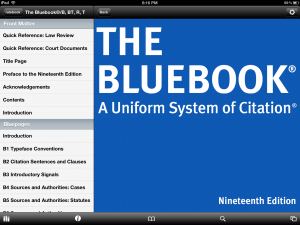 A big part of why I am so intrigued by social media and employment law is because of the extent of information people are willing to share with others about themselves through these mediums. One way this can be accomplished is through the “like” feature on Facebook. Facebook describes the “like” feature as “a way to give positive feedback or to connect with things you care about on Facebook.” Once someone hits the “like” button, a caption to the content indicates his or her positive affirmation.
A big part of why I am so intrigued by social media and employment law is because of the extent of information people are willing to share with others about themselves through these mediums. One way this can be accomplished is through the “like” feature on Facebook. Facebook describes the “like” feature as “a way to give positive feedback or to connect with things you care about on Facebook.” Once someone hits the “like” button, a caption to the content indicates his or her positive affirmation.
Consumer Reports (p. 28, June 2012) recently featured the extent to which people “like” things on Facebook. A national survey of active Facebook adults revealed that over the previous 12 months, 4.7 million “liked” a page pertaining to health conditions or treatments, 2.3 million “liked” a page regarding sexual orientation, 7.7 million “liked” a page relating to religious affiliation, and 1.6 million “liked” a page pertaining to a racial or ethnic affiliation. I raise these statistics with employers when I talk about social media because these all relate to protected class statuses under the Wisconsin Fair Employment Act, Wis. Stat. § 111.31 et seq. Taking an adverse employment action after learning an individual liked such things as these may open the door to a charge of unlawful discrimination.
A recent decision out of the Eastern District of Virginia is bringing front and center questions concerning the significance of a “like” in a First Amendment context. In Bland v. Roberts, 11CV0045 (E.D. Va. Apr. 24, 2012), several deputy sheriffs claimed they were unlawfully fired for supporting the sheriff’s election opponents in an election the incumbent sheriff ultimately won. Two of the plaintiffs claimed that the retaliation was due, in part, to the fact that they expressed support on the election opponent’s Facebook page. The court found the only evidence of a “statement of support” was through each individual “liking” the challenger’s Facebook page. The court found that a “like” was not sufficient speech to support the plaintiffs’ freedom of speech retaliation claim. The court explained:
 The Bluebook, A Uniform System of Citation, fondly referred to as “The Bluebook,” is now available as a mobile app. The Bluebook is a legal citation style guide. The app is available for sale through the rulebook app on all Apple iOS devices.
The Bluebook, A Uniform System of Citation, fondly referred to as “The Bluebook,” is now available as a mobile app. The Bluebook is a legal citation style guide. The app is available for sale through the rulebook app on all Apple iOS devices.
 A big part of why I am so intrigued by social media and employment law is because of the extent of information people are willing to share with others about themselves through these mediums. One way this can be accomplished is through the “like” feature on Facebook. Facebook describes the “like” feature as “a way to give positive feedback or to connect with things you care about on Facebook.” Once someone hits the “like” button, a caption to the content indicates his or her positive affirmation.
A big part of why I am so intrigued by social media and employment law is because of the extent of information people are willing to share with others about themselves through these mediums. One way this can be accomplished is through the “like” feature on Facebook. Facebook describes the “like” feature as “a way to give positive feedback or to connect with things you care about on Facebook.” Once someone hits the “like” button, a caption to the content indicates his or her positive affirmation.